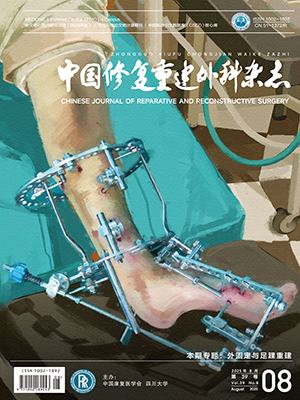Objective To know the possibility of nerveregeneration after artery sleeve anastomosis and end-to-side suture Methods Seventy-five SD rats were divided into 5 groups. First, the distal end ofsevered peroneal nerve was sutured end-to -side with artery sleeve anastomosis withnormal nerve tibial trunk in groups A, B, C and D. Second, the tibial epineurium at the suture site was not removed in group A; the epineurium at the suturesite was removed(windowing) in group B; the distal end of pre-injured peroneal nerve was sutured after 14 days and windowing was done in group C; and the neural growth factor was injected into artery sleeve and windowing was done in group D. While the distal end of severed peroneal nerve was sutured end to side directly with normal nerve tibial trunk and windowing was done in group E. The histological observation was made and the number of nerve fibers was recorded after 4, 8 and 12 weeks of operation.Results After 4 weeks, there existed the regeneration of axons and myeline sheaths in groups C, D, E, and no nerve fiber regeneration was seen in group A. After 8 weeks, the regenerating nerve fibers were significantly more in groups C, D and E than in group B and ingroup E than groups C and D(P lt;0.05). After 12 weeks, the regenerating nervefibers were significantly more in groups C,D and E than in group B(P lt;0.05).Conclusion End-to-side coaptation with artery sleeve anastomosis is a new valuable method in repair of peripheral nerve injuries.
Citation: LI Zhiyue,ZHAO Qun,ZHU Jiakai.. EXPERIMENTAL STUDY ON PERIPHERAL NERVE REGENERATION AFTER ARTERY SLEEVE ANASTOMOSIS AND END-TO-SIDE SUTURE. Chinese Journal of Reparative and Reconstructive Surgery, 2004, 18(6): 487-489. doi: Copy
Copyright © the editorial department of Chinese Journal of Reparative and Reconstructive Surgery of West China Medical Publisher. All rights reserved




